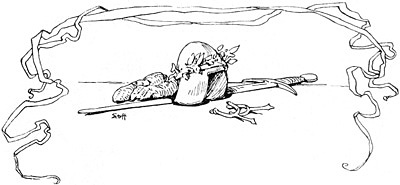
FOREWORDLook at the map of Europe. In the north-west you will see the island of Iceland. The great oceans are wide around it on every side; its northern coast is just touching the Arctic circle. How far off and apart from all the world it seems! How out of touch with the enterprise, the commerce, the strife, with all the activities that make up our ideas of a living national life! To most people the Iceland of to-day is little more than a name, and the Iceland of the past is entirely unknown. Yet the little island in the far north has a special claim upon all Northern peoples, for she has preserved a Literature which is the record of a race whose blood runs in their own veins, and which was written in the language that was in the days long past common to all of them. In the course of years this one language developed into many languages, through the influence of different conquering races in the different lands; but the little island still kept the old language untouched by foreign invaders, for the rigours of her climate and the wide seas around her made her unattractive and dangerous, and thus protected her. And not only was she able to preserve the old language, but also the character and traditions of her people. And language, character, and traditions were enshrined in a Literature which in beauty and in human interest is as rich as any of the classic literatures of the world. Let us see how this Literature arose. It was not until the end of the ninth century that Iceland became the home of a settled population. Before then it was probably uninhabited, |
|
except for some few holy men who came from Ireland seeking peace and solitude in the lonely island, and for a few fishermen who came yearly from Ireland and Scotland and dwelt, during the summer season, on its coasts pursuing their industry. But towards the end of the ninth century, many chiefs with their families and all their followers came over from Norway and settled in the land. Before this time Norway had been broken up into many small kingdoms and these chiefs had been as kings, and had ruled their own little kingdoms, but the mighty Harald Hairfair, himself a King over one of these kingdoms, had fared through the length and breadth of the land warring against all who opposed him, until he had made himself master and sole King of the whole of Norway. And many of the chiefs bowed before him and became his men, but many there were who went to death or exile rather than bend the knee to the overbearing Harald. Some of the chiefs who escaped, having heard from adventurous seamen of an unpeopled island in the West, set sail for Iceland, and made it their home. They did not mind the ice and snow, for they had been used to these in their own land; and fair and smiling was the little island in the summer season, pleasant with pasture lands, and rich in fish. And for more than sixty years after the first families had settled there, there was a constant stream of chieftains, noble men and yeomen, who fled from the tyranny of Harald. And each chief took a part of the island, and ruled his own people, just as he had done in his own land of Norway, and they prospered and multiplied. Simple they were in their domestic life; well-ordered in their public affairs; brave and adventurous when they fared forth a-warring as far as the world was then known. And in the new life and land they did not forget the old life and the old country. In the long dark nights of winter |
|
they sat by their fires and, while the men made nets, and the women wove or spun, one of the household would tell or sing the old stories of their gods and kings and heroes. And the children listened, and learnt the stories by heart, and when they were grown to manhood and womanhood, they told and sang the same stories to their children. And so the past was kept alive. And not only with regard to the past was this done, but the deeds of each chieftain and each hero in each community were kept on record in the same way, so that an almost complete history of the people and the land was made. And the years passed on and the stories and songs were at last written down, most of them between the years 1140 and 1220. Some have been lost, but many still remain, and it is from these that the stories in this book have been taken. In one group you will read of the ideas held by this ancient people regarding the making of the world, the wonders of nature, and the mysteries of life. In those early days they were not Christians, but worshipped many gods, of whom Odin, the All-Father, was the chief. Other stories deal with their chieftains, with the Kings of Norway, and with their heroes, both actual and legendary. Perhaps the greatest of the legendary-heroic stories is the Story of the Volsungs. The story of its hero, Sigurd, is found in many forms in many Northern lands: in Germany it is the subject of Richard Wagner’s great music drama of “Siegfried.” The stories that are collected in this book are few in comparison with the many that still exist, but it is hoped that they may arouse an interest in this old and wonderful Literature, in the people who produced it, and in the land which has preserved it.

|

|

|

|